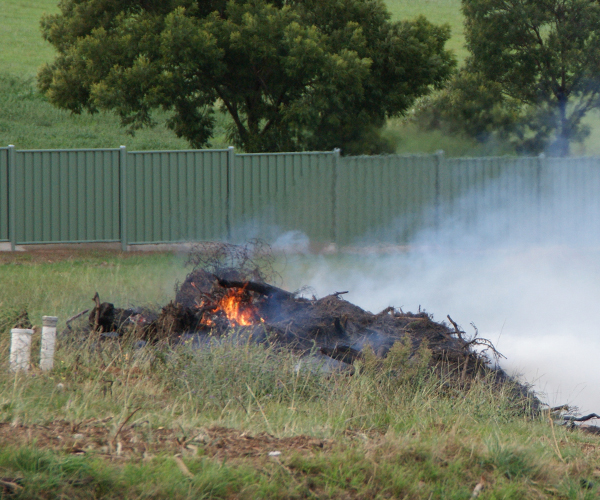Burning off grass, stubble, weeds, undergrowth or other vegetation is generally permitted outside the Fire Danger Period.

Local laws on burn-offs can apply year-round. Check with your local council before lighting up.
Before burning off, ensure:
- You're following regulations or laws by CFA and your local council.
- You notify your neighbours if your activity will generate fire and smoke.
- Check the weather forecast for the day of the activity and a few days afterwards.
- Establish a gap in vegetation or fire break with no less than three metres cleared of all flammable material.
- There are enough people to monitor, contain and extinguish the burn safely and effectively.
Unregistered burn-offs can cause brigades to be called out unnecessarily.
Register your burn-off
Notify Triple Zero Victoria of your planned burn:
- Online (Preferred) - Register online through the Fire Permits Victoria website. You can do so if your burn-off commences more than two hours from now.
- By Phone - If you wish to start your burn-off immediately, you may register your burn-off by calling Triple Zero Victoria on 1800 668 511, 24 hours a day, 7 days a week. National Relay Service Users can ring 1300 555 727 and ask for Information to be relayed to Triple Zero Victoria via 1800 668 511.
* Please remember that emergency 000 calls will always take priority. Registering online is the fastest and simplest option.
Permits
Check CFAs Fire Permits page for information on permit requirements and application processes.
Page last updated: Monday, 10 November 2025 1:36:46 PM